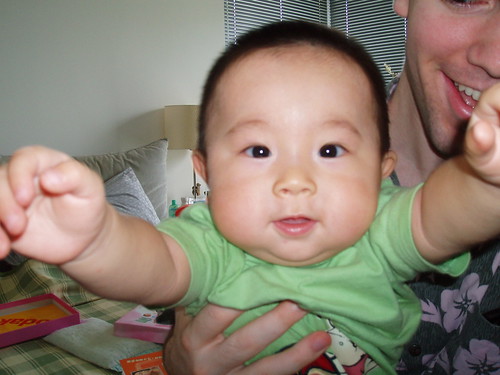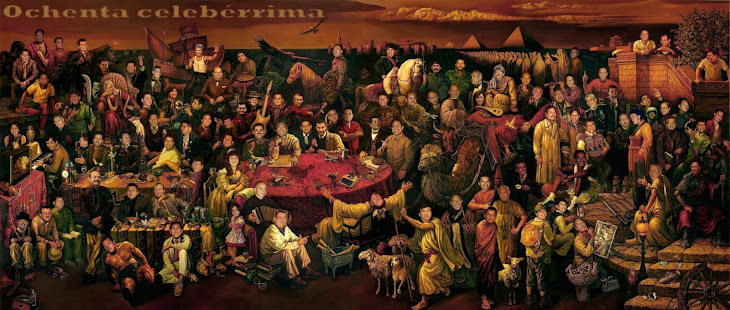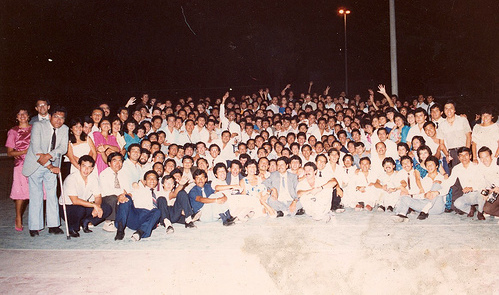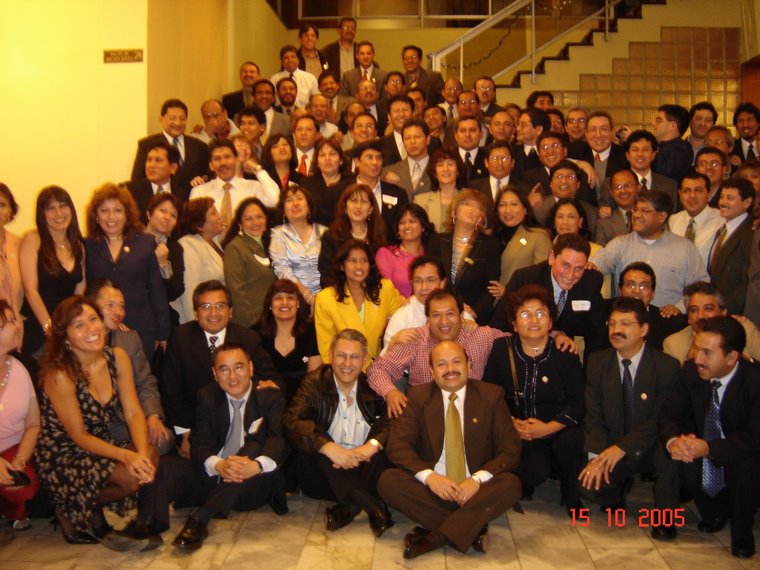Painful Payment for Afghan Debt: A Daughter, 6
A camp in Kabul. Taj Mohammad borrowed money to pay for hospital treatment for his wife and medical care for some of his children. Speaking of the likely fate of his daughter Naghma, top right, he said, “She does not know what is going to happen.”
Naghma ("Melodia") : seis años : $2,500.
KABUL, Afghanistan — As the shadows lengthened around her family’s hut here in one of Kabul’s sprawling refugee camps, a slight 6-year-old girl ran in to where her father huddled with a group of elders near a rusty wood stove. Her father, Taj Mohammad, looked away, his face glum. “She does not know what is going to happen,” he said softly. If, as seems likely, Mr. Mohammad cannot repay his debt to a fellow camp resident a year from now, his daughter Naghma, a smiling, slender child with a tiny gold stud in her nose, will be forced to leave her family’s home forever to be married to the lender’s 17-year-old son. The arrangement effectively values her life at $2,500.
That is the amount Mr. Mohammad borrowed over the course of a year to pay for hospital treatment for his wife and medical care for some of his nine children — including Janan, 3, who later froze to death in bitter winter weather because the family could not afford enough firewood to stay warm. “They said, ‘Pay back our money,’ and I didn’t have any money, so I had to give my girl,” Mr. Mohammad said. “I was thankful to them at the time, so it was my decision, but the elders also demanded that I do this.” The story of how Mr. Mohammad, a refugee from the fighting in Helmand Province who in better days made a living as a singer and a musician, came to trade his daughter is in part a saga of terrible choices faced by some of the poorest Afghan families. But it is also a story of the way the war has eroded the social bonds and community safety nets that underpinned hundreds of thousands of rural Afghans’ lives. Women and girls have been among the chief victims — not least because the Afghan government makes little attempt in the camps to enforce laws protecting women and children, said advocates for the camp residents.
The Camps
The dark, cramped room where Mr. Mohammad lives with his wife and his eight children is typical of the shelters in the Charahi Qambar camp, which houses 900 refugee families from war-torn areas, mostly in southern Afghanistan. The camp is the largest in the capital area, but just one of 52 such “informal settlements” in the province, according to the United Nations Office for the Coordination of Humanitarian Affairs. Abjectly poor, the people in the camps came with little more than a handful of household belongings. Seeking safety and aid, they instead found themselves unwelcome in a city already overcrowded with returning refugees from Pakistan and Iran. For years Charahi Qambar did not even have wells for water because the government was reluctant to let aid groups dig them, said Mohammad Yousef, an engineer and the director of Aschiana, an Afghan aid group that works in nine camps around the country as well as with street children. The refugees’ skills as farmers and small village workmen were of little use here since they had neither land nor houses. Penniless, they gravitated to others from the same area, and the camps grew up. Mr. Mohammad, like most men in the camps, looks for work almost every morning as an unskilled laborer, which pays about $6 a day — not even enough to buy the staples that his family subsists on: green tea, bread and, when they can afford them, potatoes. Meat and sugar are the rarest of luxuries. Many days, no one hires the camp men at all, put off by their tattered clothes, blanketlike wraps and full beards. “People know where we are from and think we are Taliban,” Mr. Mohammad said. After four years in the camp, he is thinking now of going back to Helmand as a migrant laborer for the opium poppy harvest so that he can earn enough to feed his family and save a little for next winter’s firewood. “It is too cold, and we wish we had more to eat,” said Rahmatullah, one of 18 deputy camp representatives and one of the few who spoke against the jirga’s decision to have Mr. Mohammad give his daughter to pay off the debt. Rahmatullah, who uses just one name, did note a positive difference in camp life, however, adding, “We do have one thing here — we have education.” Education was unheard-of for most camp residents at home in Helmand, and Rahmatullah, like many camp residents, said that at first he was suspicious of it. Shortly after arriving in the camp four years ago, he was shocked to see young girls walking on the street. He was even more amazed when another camp resident explained that the girls were going to school. “I did not know that girls could go to school, because in my village only a very few girls were taught anything and it was always at home,” he said. “I thought, ‘Maybe these are the daughters of a general,’ because where I come from women do not leave their homes, not even to bring water.” “I talked to my wife, and we allowed our girls to go to the camp school, and now they are in the regular Kabul school,” he said. His daughters were lucky. The schools in the camp were run by Aschiana, which gives a healthful lunch to every child enrolled — 800 in the Charahi Qambar camp alone. They try to bring the children up to a level where they can keep up in the regular Kabul schools. However, that program has just ended because the European Union, amid financial woes, is not renewing its programs for social protection. Instead, it is focusing its aid spending on the Afghan government’s priorities, ratified at last year’s international aid meeting in Tokyo, which do not include child protection, Alfred Grannas, the European Union’s chargé d’affaires in Afghanistan, said in an e-mail.
The World of Women
Like most dwellings in the camp, Mr. Mohammad’s hut has a tarpaulin roof, lightly reinforced with wood, an unheated entry room, and an inner room with a stove. A small, grimy window lets in a faint patch of light, and piled around the room’s edges are the family’s few possessions: blankets, old clothes, a few battered pots and pans, and 10 bird cages for the quails he trains to sing in hopes of selling them for extra money. For his wife, a beautiful young woman who sat huddled in the shadows, a black veil drawn across her face as her husband discussed their daughter’s fate, there is little to look forward to day to day. Back in their village in Helmand, even poor families have walled compounds and sometimes land where a woman can go outdoors. In the camps, though, the huts are crammed together, with narrow mud pathways barely more than foot wide between them. “There’s no privacy in the camps, and for women it is like they are in a prison,” said Mr. Yousef, the Aschiana director. “They are constantly under emotional stress.” Like many Afghan women, Mr. Mohammad’s wife, Guldasta, let her husband speak for her — at first. He explained that she was too upset about what was happening to her daughter to talk about the situation. But then in a quiet moment, she turned, lifting her veil to reveal part of her face and said clearly: “I am not happy with this decision; it was not what I wanted for her.” “I would have been happy to let her grow up with us,” she said. The family’s case is a kind of dark distortion of the Afghan tradition of the groom’s family paying a “bride price” to the family of the wife-to-be. The practice is common particularly in Pashtun areas, but it exists among other ethnic groups as well and can involve thousands of dollars. In this case, the boy who is receiving Naghma as a wife, instead of paying for her, will get her in exchange for the debt’s forgiveness. Because Naghma, whose name means melody, was not chosen by the groom, she will most likely be treated more like a family servant than a spouse — and at worst as a captive slave. Her presence may help the groom attract a more desirable second wife because the family, although poor, will have someone working for it, insulating the chosen wife from some of the hardest tasks. Anthropologists say this kind of use of women as property intensified after the fall of the Taliban, said Deniz Kandiyoti, a professor at the School of Oriental and African Studies at the University of London. The most recent anthropological studies of the phenomenon were of indebted drug traffickers who sold their daughters or sisters to settle debts, she said. These are essentially distress sales. And unlike the norm for marriage exchanges before the past three decades of war, the women in some cases have become salable property — stripped of the traditional forms of status and respect, she said.
Regrets
Almost from the moment he agreed to the deal, Mr. Mohammad began to regret it and think about all that could go wrong. “If, God forbid, they mistreat my daughter, then I would have to kill someone in their family,” he said as he stood at the edge of the camp in a muddy lot in the cold winter dusk. “You know she is very little, we call her ‘Peshaka,’ ” he said, using the Pashto word for kitten. “She is a very lovely girl. Everybody in our family loves her, and even if she fights with her older brothers, we don’t say anything, we give her all possible happiness.” He added: “I believe that when she goes to that house, she will die soon. She will not receive all the love she receives from us, and I am afraid she will lose her life. A 6-year-old girl doesn’t know about having a mother-in-law, a father-in-law, or having a husband or being a wife,” he said. Adding to their fears, the mother of the boy that Naghma will marry came to Mr. Mohammad’s home to ask his wife to stop sending the girl to school, he said. “You know, my daughter loves going to school, and she wants to study more and more. But the boy she is marrying, he sent his mother yesterday to tell my wife, ‘Look, this is dishonoring us to have my son’s future wife go to school,’ ” he said. “I cannot tell them what to do,” he added, looking down at his boots. “This is their wife, their property”













No hay comentarios.:
Publicar un comentario